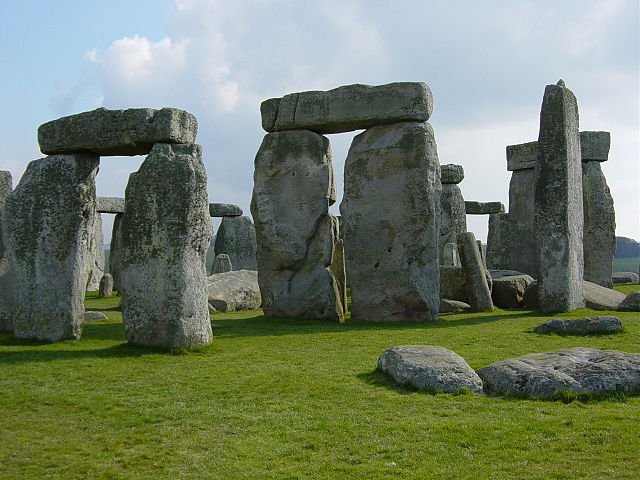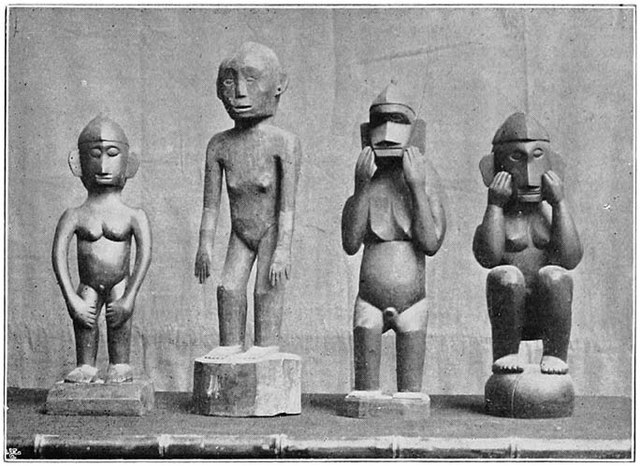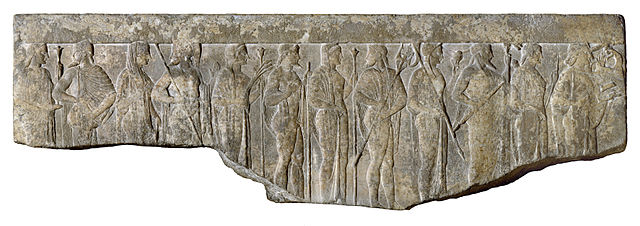Paganism is a term first used in the fourth century by early Christians for people in the Roman Empire who practiced polytheism, or ethnic religions other than Judaism. In the time of the Roman Empire, individuals fell into the pagan class either because they were increasingly rural and provincial relative to the Christian population, or because they were not milites Christi. Alternative terms used in Christian texts were hellene, gentile, and heathen. Ritual sacrifice was an integral part of ancient Graeco-Roman religion and was regarded as an indication of whether a person was pagan or Christian. Paganism has broadly connoted the "religion of the peasantry".
Depiction from 1887 showing two Roman women offering a sacrifice to the goddess Vesta
Reconstruction of the Parthenon, on the Acropolis of Athens, Greece
Some megaliths are believed to have religious significance.
Children standing with The Lady of Cornwall in a neopagan ceremony in England
Polytheism is the belief in or worship of more than one god. According to Oxford Reference, it is not easy to count gods, and so not always obvious whether an apparently polytheistic religion, such as Chinese Folk Religions, is really so, or whether the apparent different objects of worship are to be thought of as manifestations of a singular divinity. Polytheistic belief is usually assembled into a pantheon of gods and goddesses, along with their own religious sects and rituals. Polytheism is a type of theism. Within theism, it contrasts with monotheism, the belief in a singular God who is, in most cases, transcendent.
Egyptian gods in the Carnegie Museum of Natural History
Bulul statues serve as avatars of rice deities in the Anitist beliefs of the Ifugao in the Philippines.
Procession of the Twelve Olympians
It is sometimes claimed that Christianity is not truly monotheistic because of its idea of the Trinity








